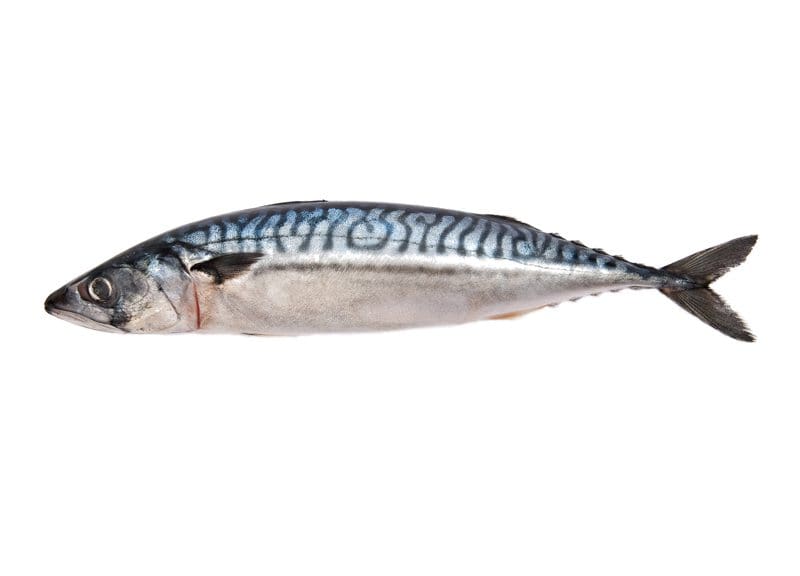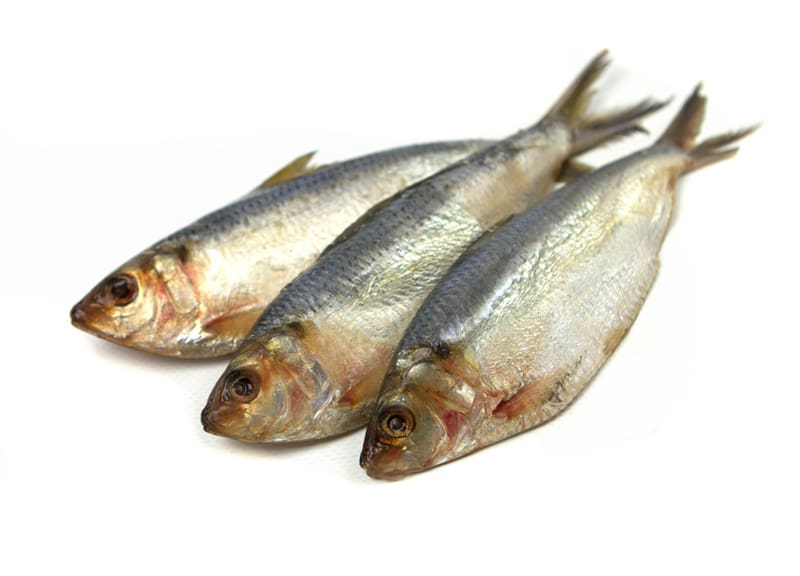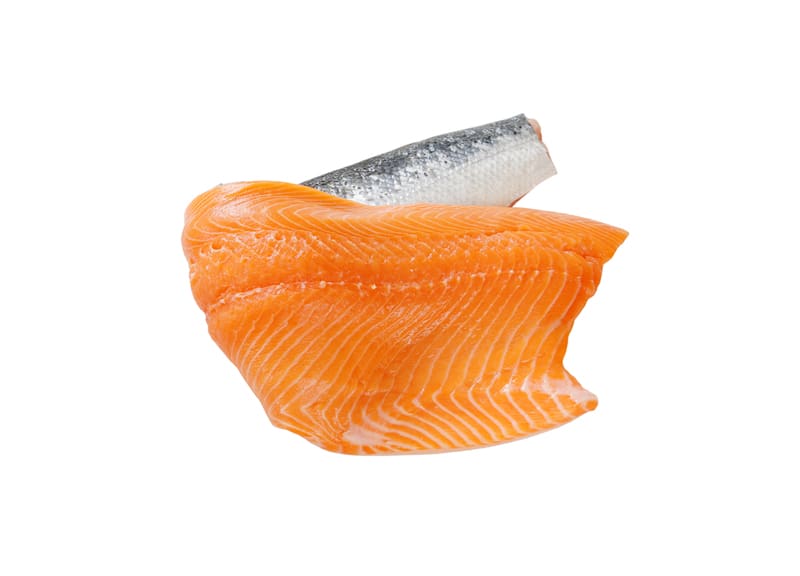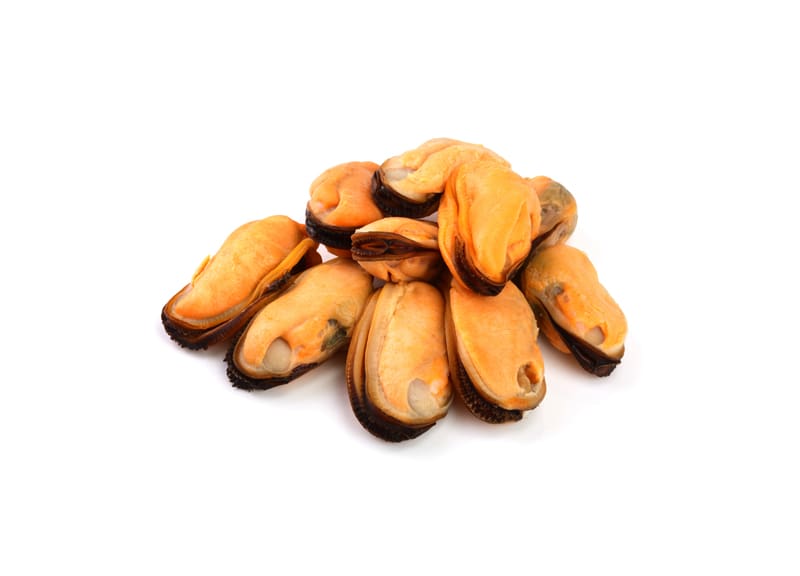Most ratio raw diets will be lacking in essential Vitamin D and omega 3 fatty acids: EPA and DHA. These fatty acids have multiple roles for biological function and are required for optimal canine health. Therefore, including ingredients with high concentrations of EPA and DHA is recommended.
Fat in general has been vilified in society. Many people are conditioned to believe feeding fatty foods to their pet is dangerous. The importance of fat should go without saying considering dog’s and cat’s brains (and humans, too!) are roughly 60% fat. Marine-sourced fats contain essential fatty acids Eicosapentaenoic Acid (EPA) and Docosahexaenoic Acid (DHA) which are essential for optimal canine health.
EPA plays a critical role in regulating cellular inflammation while DHA is important for maintaining nerve cell structure and function. Essential fatty acids, specifically DHA, have been scientifically proven as necessary for cognitive development and function. Research proves children (and developing puppies) who receive a diet rich in DHA will have higher cognitive function and learn better!
Ensuring a raw diet provides sufficient levels of EPA and DHA can be achieved by including fatty fish and shellfish in the diet. Certain species of Fatty fish also fulfill Vitamin D requirements.
Fatty Fish
Many fatty fish species such as Mackerel and Salmon, provide high amounts of vitamin D in addition to EPA and DHA.
Shellfish
Shellfish are beneficial to include essential minerals as well as smaller amounts of EPA and DHA.
Fatty fish should only be a small portion of the overall diet in comparison to other ingredients. It is important to avoid larger fish species with higher concentrations of mercury. Overall, selecting small fatty fish lower on the food chain reduces the risk of mercury.

Atlantic Mackerel
Atlantic mackerel provides the most EPA and DHA in comparison to other fatty fish. Additionally, mackerel has high levels of Vitamin D which makes it a useful ingredient when formulating a raw diet. Raw mackerel is common in ethnic markets. Canned mackerel in water is an alternative option if raw cannot be sourced.

Atlantic Mackerel Nutritional Data
Macro Nutrients
The amount of calories, protein, fat, and carbs are based on 1oz (28g).
| Calories | 58kcal |
| Protein | 18.6% |
| Fat | 13.9% |
| Carbs | 0% |
Top Nutrients
The top four nutrients are based on 1oz (28g) of raw Atlantic Mackerel.
| EPA + DHA | 0.65 g |
| Vitamin D | 4.6 mcg |
| Niacin (B3) | 2.5 mg |
| Pyridoxine (B6) | 0.11 mg |
Atlantic Herring
Atlantic herring also provides high levels of EPA and DHA. However, herring is significantly lower in Vitamin D in comparison to mackerel. Herring is a small fish found at local ethnic markets and fish markets.

Atlantic Herring Nutritional Data
Macro Nutrients
The amount of calories, protein, fat, and carbs are based on 1oz (28g).
| Calories | 45kcal |
| Protein | 17.9% |
| Fat | 9% |
| Carbs | 0% |
Top Nutrients
The top four nutrients are based on 1oz (28g) of raw Atlantic Herring.
| EPA + DHA | 0.44 g |
| Cobalamin (B12) | 3.87 mcg |
| Vitamin D | 1.2 mcg |
| Pyridoxine (B6) | 0.08 mg |
Sardines
Sardines are one of the most common fatty fish options available to purchase. They are high in EPA and DHA with a moderate level of Vitamin D. Raw sardines are common in ethnic markets. Canned sardines in water are an alternative option if raw cannot be sourced.

Sardine Nutritional Data
Macro Nutrients
The amount of calories, protein, fat, and carbs are based on 1oz (28g).
| Calories | 24kcal |
| Protein | 13% |
| Fat | 4% |
| Carbs | 0% |
Top Nutrients
The top four nutrients are based on 1oz (28g) of raw Sardines.
| EPA + DHA | 0.25 g |
| Niacin (B3) | 1.79 mg |
| Vitamin D | 0.7 mcg |
| Cobalamin (B12) | 1.46 mcg |
Pink Salmon
Salmon is another commonly available fatty fish option and it is moderately high in EPA and DHA fatty acids. Although slightly lower than mackerel, salmon still has a high level of Vitamin D compared to other fish species. Raw salmon is easily accessible in many regions, but may be costly. Canned salmon is cheaper in comparison to raw salmon and is a more budget-friendly alternative.
Salmon from the Pacific Northwest should be frozen solid to an internal temperature of −4°F (−20°C) for at least 24 hours prior to feeding raw or thoroughly cooked to eliminate the risk of salmon poisoning. Canned salmon is already cooked, therefore it is safe to feed immediately.

Pink Salmon Nutritional Data
Macro Nutrients
The amount of calories, protein, fat, and carbs are based on 1oz (28g).
| Calories | 21kcal |
| Protein | 20.5% |
| Fat | 4.4% |
| Carbs | 0% |
Top Nutrients
The top four nutrients are based on 1oz (28g) of raw Pink Salmon.
| EPA + DHA | 0.14 g |
| Vitamin D | 3.1 mcg |
| Niacin (B3) | 2.2 mg |
| Pyridoxine (B6) | 0.17 mg |
Blue Mussels
Blue/black mussels are a beneficial ingredient to include in raw diets to provide manganese in addition to small amounts of EPA and DHA. Blue/black mussels are high in manganese and B vitamins. However, blue/black mussels will not fulfill Vitamin D requirements in reasonable amounts.
Raw mussels should be cooked prior to feeding due to the risk of toxoplasma gondii infection. Cooking mussels eliminates this risk. However, mussels sold on the half shell or without any shell have been pre-steamed and do not need any further cooking.

Blue Mussel Nutritional Data
Macro Nutrients
The amount of calories, protein, fat, and carbs are based on 1oz (28g).
| Calories | 49kcal |
| Protein | 23.8% |
| Fat | 4.5% |
| Carbs | 0% |
Top Nutrients
The top four nutrients are based on 1oz (28g) of steamed Blue Mussels.
| EPA + DHA | 0.22 g |
| Manganese | 1.9 mg |
| Cobalamin (B12) | 6.8 mcg |
| Folic Acid (B9) | 76 mcg |
Canned Eastern Oysters
Oysters are a shellfish that provides low amounts of EPA and DHA. Oysters should only be fed in small amounts due to their high concentration of zinc. They do prove useful for completing zinc requirements. Other sources of EPA and DHA are typically needed in addition to oysters.
Raw oysters are expensive and like mussels, oysters should be cooked prior to feeding due to the risk of toxoplasma gondii infection. Cooking oysters eliminates this risk. Alternatively, canned oysters in water can be used as a more affordable option.

Canned Eastern Oysters Nutritional Data
Macro Nutrients
The amount of calories, protein, fat, and carbs are based on 1oz (28g).
| Calories | 43kcal |
| Protein | 7% |
| Fat | 2.5% |
| Carbs | 0% |
Top Nutrients
The top four nutrients are based on 1oz (28g) of canned Eastern Oysters.
| Zinc | 25.77 mg |
| EPA + DHA | 0.06 g |
| Cobalamin (B12) | 5.4 mcg |
| Copper | 1.2 mg |
Supplements
Fatty fish and shellfish are not necessarily required ingredients for a complete and balanced raw diet if alternative supplements are fed. EPA/DHA and vitamin D supplements are needed when fatty fish are not fed. Zinc and Manganese supplements may be needed if shellfish are not fed.
CLOSING COMMENTS
There are more fatty fish and shellfish than the ingredients listed in this article. This list is not to insinuate other items cannot or should not be fed. The raw ingredients listed in this article prove beneficial and efficient when achieving the recommended allowances for specific essential nutrients.
Including fatty fish and shellfish in a raw diet proves beneficial when completing the recommended allowances for:
EPA & DHA
Fatty fish is the main source of EPA and DHA fatty acids essential for optimal health and brain development. Alternatively, a fish oil or EPA/DHA supplement can be used if fatty fish is not fed. Omega-3 supplements from seed sources will not provide EPA/DHA.
Vitamin D
In addition to providing EPA and DHA, many fatty fish provide high levels of Vitamin D which is an essential nutrient for growth and development.
Essential Minerals
Certain shellfish provide additional nutrients besides EPA and DHA. Blue/black mussels are a good source of manganese, and oysters are a good source of zinc and copper.
